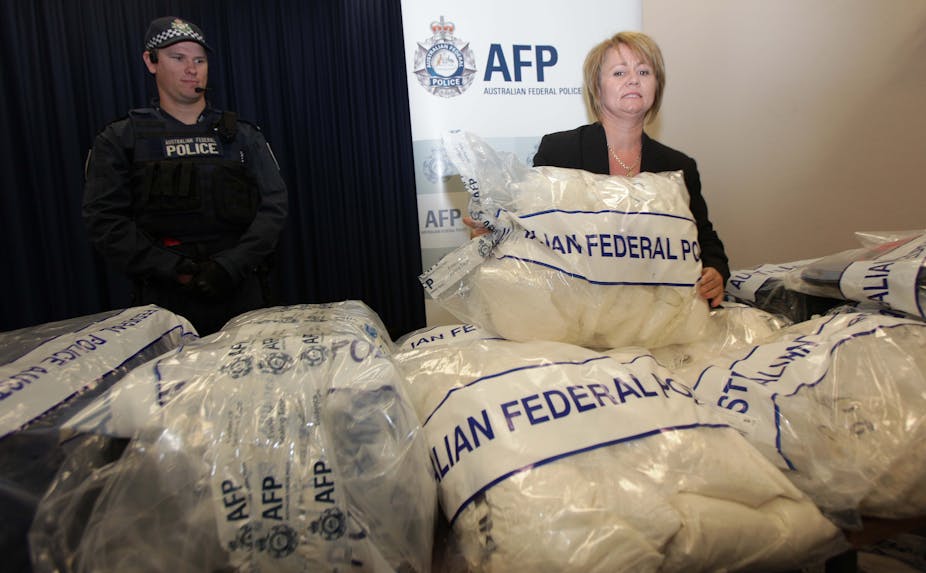It’s 1974 again.
I am 25 and a member of Lionel Murphy’s national Drug Advisory Council. Occasionally I am a drug educator with my mate, psychologist Simon Haselton, for the NSW Health department.
As a junior sociology lecturer, I am working on my PhD about Surry Hills, one part of which is on the sociology of the emerging drug scene. Somehow I am mates with Don Chipp, whom I had met when he was Customs Minister responsible for drugs, and head of customs Alan Carmody.
Al McCoy has just published his Politics of Heroin in South East Asia, which traces the commodity trade in drugs and points to the Australian involvement with the CIA role in South East Asia via the Griffith-based Nugan Hand Bank. Two years later [Don Mackay](http://en.wikipedia.org/wiki/Donald_Mackay_(anti-drugs_campaigner), the local Liberal candidate, would be murdered, probably by rogue ex-cop Fred Krahe, in a corruption filled space that would continue until today as an unresolved crime.
The ducks line up.
November 1974, the Sydney Morning Herald publishes a report foregrounding the Federal Customs worries about heroin increases quoting Murphy, Carmody and referring to the head of the Federal Narcotics Bureau Harvey Bates.
My letter in reply is headed “Drug Abuse needs a social – not police – cure”.
It continued, “While both [the McMahon and Whitlam] governments have accepted [that drug abuse is a social problem] as an "enlightened position”, they have done nothing about it. They are still involving themselves in playing cops and robbers … rather than working out social policies of any sort for Australia. The only way to deal with drug abuse … is an effective treatment and support policy for all those who are in trouble with drugs, so that the human needs are not shielded by fear of punishment".

I went on to suggest we need a drug education program that was realistic, that taught people how to use drugs sensibly if they decided to, and which addressed the widespread dangerous drugs such as tobacco and heroin as medical risks.
I argued police were more concerned with high arrest rates of kids than dealing with the social issues that led to licit or illicit drug abuse, holding myself back from suggesting they wanted increased criminalisation for the windfall gains it would ensure for dodgy coppers. (This after all was in the days of NSW police commissioner Norm Allan and his band of trusty protectors, when the Balmain Welding Company provided a steady stream of merchandise and payoffs to all and sundry).
Nearly forty years later we have been through the early drug war so wonderfully documented in John Jiggens’ 2004 PhD, then through the locking in of drugs and guns in the 1990s, the heroin wars of Cabramatta and Bankstown and the smashing of generations of young people by uncaring, vindictive, at times racist and brutal government responses.
Over that forty years we have seen the rise of huge drug cartels, drug lords and “bikie gangs”, the creation of new drugs like ice and ecstasy and superdope with impossibly high THC contents, with capacities to numb and corrode lives never imagined in the past.
Generations of young people have become inured to the meaninglessness of the drug control regimes, bitter about the continuing police harassment, and cynical about laws and the law-makers. In gaols we have thousands of young people, drug dealers, extortionists, thieves and thugs, who have become socialised into a world where drugs promise instant wealth, where violence is the lingua franca, and physical destruction an everyday expectation.
All of this was predictable and was predicted.
The latest Australia21 report simply brings things up to date. None of what it says is rocket science; it echoes last year’s Global Report that said much the same thing and reached similar conclusions.
Alex Wodak wrote about it fifteen years ago, Nick Cowdery has been talking about it endlessly, and maybe Mick Palmer even read the old reports about Harvey Bates and the bad days of Nugan Hand to get a handle on the realities.
The streets of western Sydney are littered with corpses full of bullets bought with money made out of drugs, fired by guns bought with drug money, delivered in cars (if not stolen) bought with drug money.
Drug mules languishing in Bali or Bangkok were seduced by images of money that could only be possible in the current drug control regime. Tax payers watch money that could be used for schools and hospitals going to prisons and police, diverted directly as a result of the current drug control regime.
Steve Buscemi plays “Nucky” Thompson, a “boss” of Atlantic City in the HBO cable series Boardwalk Empire. In the show. Thompson’s power, wealth and influence depend on the combination of bad laws, corrupt police, and the omnipresent awareness of pervasive violence that came with prohibiting alcohol in the 1920s.
That model underpins the war on drugs that began in the mid 1970s, flourished during the Howard years, and remains today.
While huge drug hauls continue, reducing supply, raising prices and ensuring limitless demand for the raw materials, energy is focused not on resolving the social issues, but on ensuring the continuation of the body count in the war.
As Wodak has shown in his research, the casualties of the drug war are its supposed beneficiaries; the beneficiaries are the supposed enemy targets; and the losers are the rest of us.

